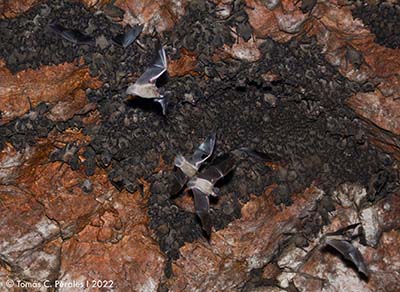(703) 881-3170
Brazilian Free-tailed Bat Information
Brazilian Free-tailed Bat Facts

Officially this bat is not present in Virginia, however, in the past couple of years a small handfull has been appearing here. This bat has been seen in Charlottesville, Blacksburg, and Chesapeake. Indicating that it's range may have extended to Virginia. As it's a new arrival, there hasn't been any designation on it's conservation. But nation-wide this bat's conservation status is listed as Least Concern. However, this species is susceptible to white-nose syndrome, and when they appear in larger numbers this can become an issue. White-nose syndrome is cause by a fungus that keeps the bats awake during hibernation causing them to lose their fat storage, leading to death from exhaustion or starvation.
This bat likes to inhabit buildings and bridges, but they can also be cavedwelling if the opportunity presents itself.
Brazilian Free-tailed Bat Characteristics
The Brazillian Free-tailed Bat (also known as the Mexican Free-tailed Bat) is best distinguished by its long tail which is half it's body length. This bat can reach up to 4 inches long, and has short brownish gray or dark brown fur. Although, some individuals will have white patches. This bat's musk is rather distinct musky odor.
Brazilian Free-tailed Bat Mating and Breeding
Mating season for the Brazilian Free-tailed Bat is assumed to occur in the spring, and they give birth in late may to early June. However, due to the small number recorded any other information involving their mating and breeding is unknown for the state of Virginia.
Brazilian Free-tailed Bat Diet
These bats like others feed on flying insects such as winged ants, wasps, beetles, and moths. In Texas, hunting for these bats start at dusk and ends at dawn. Their range is extensive reaching up to 30 miles around their roost.
